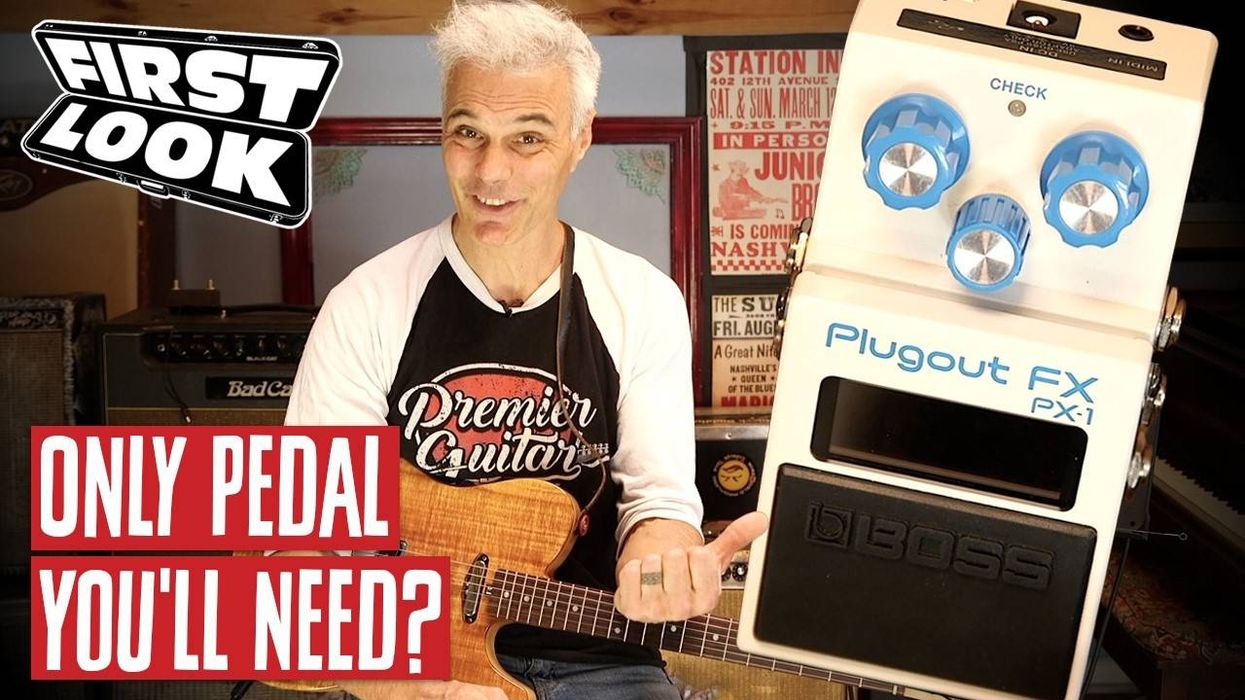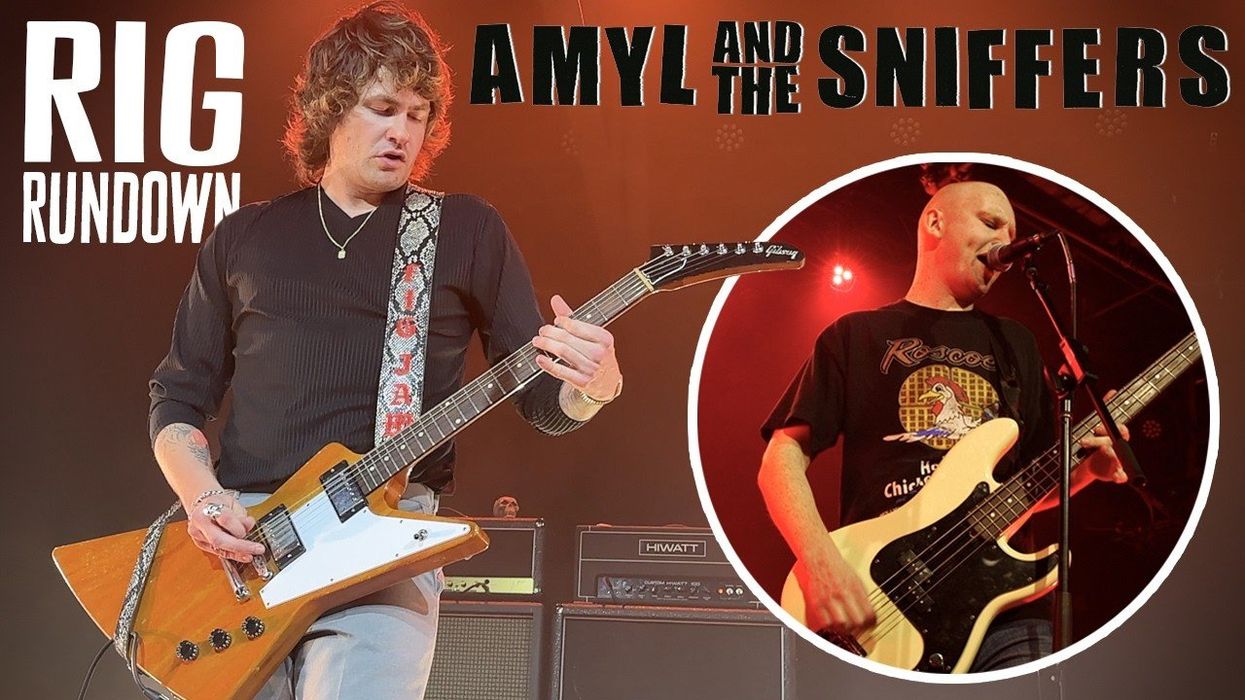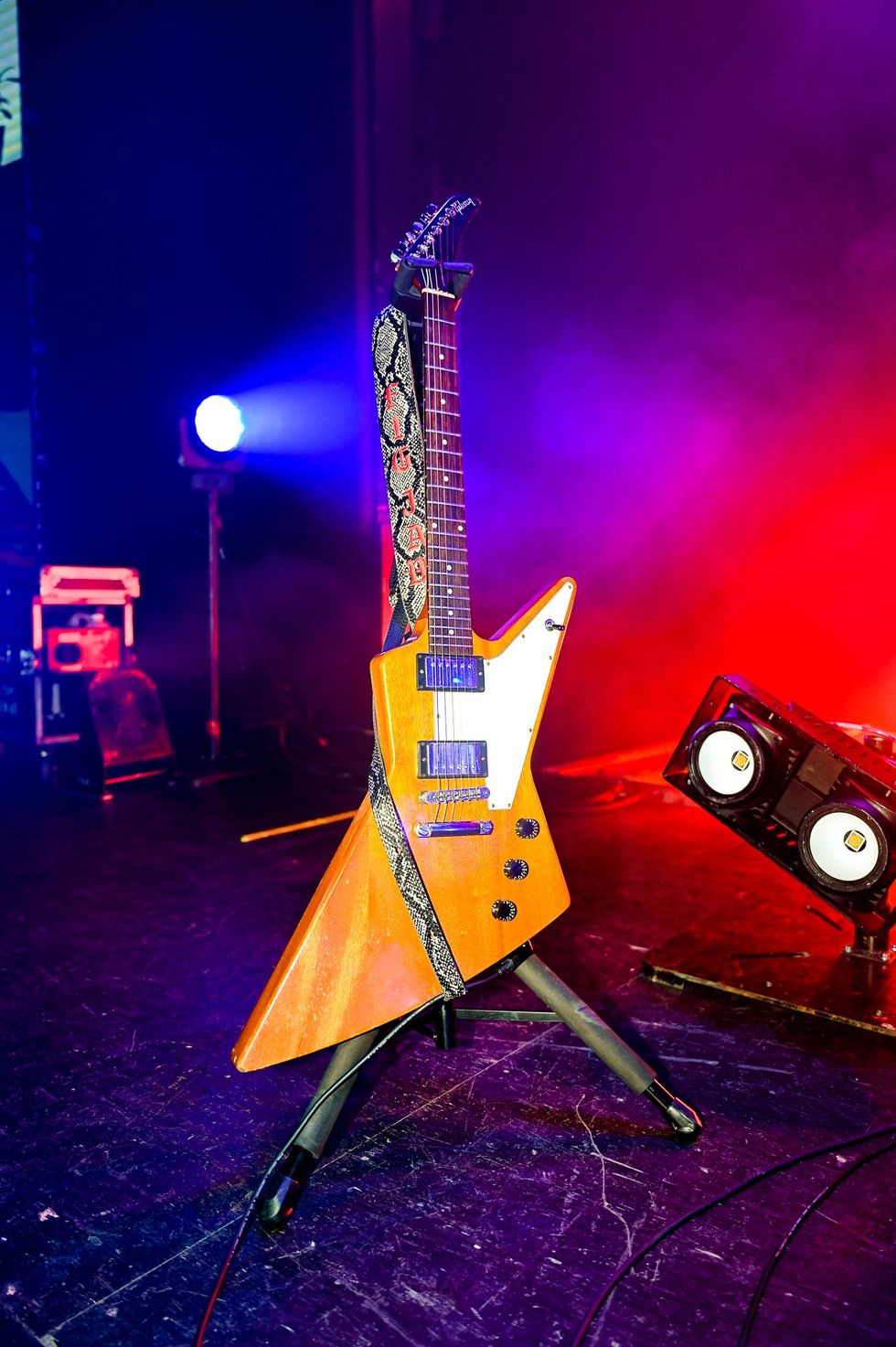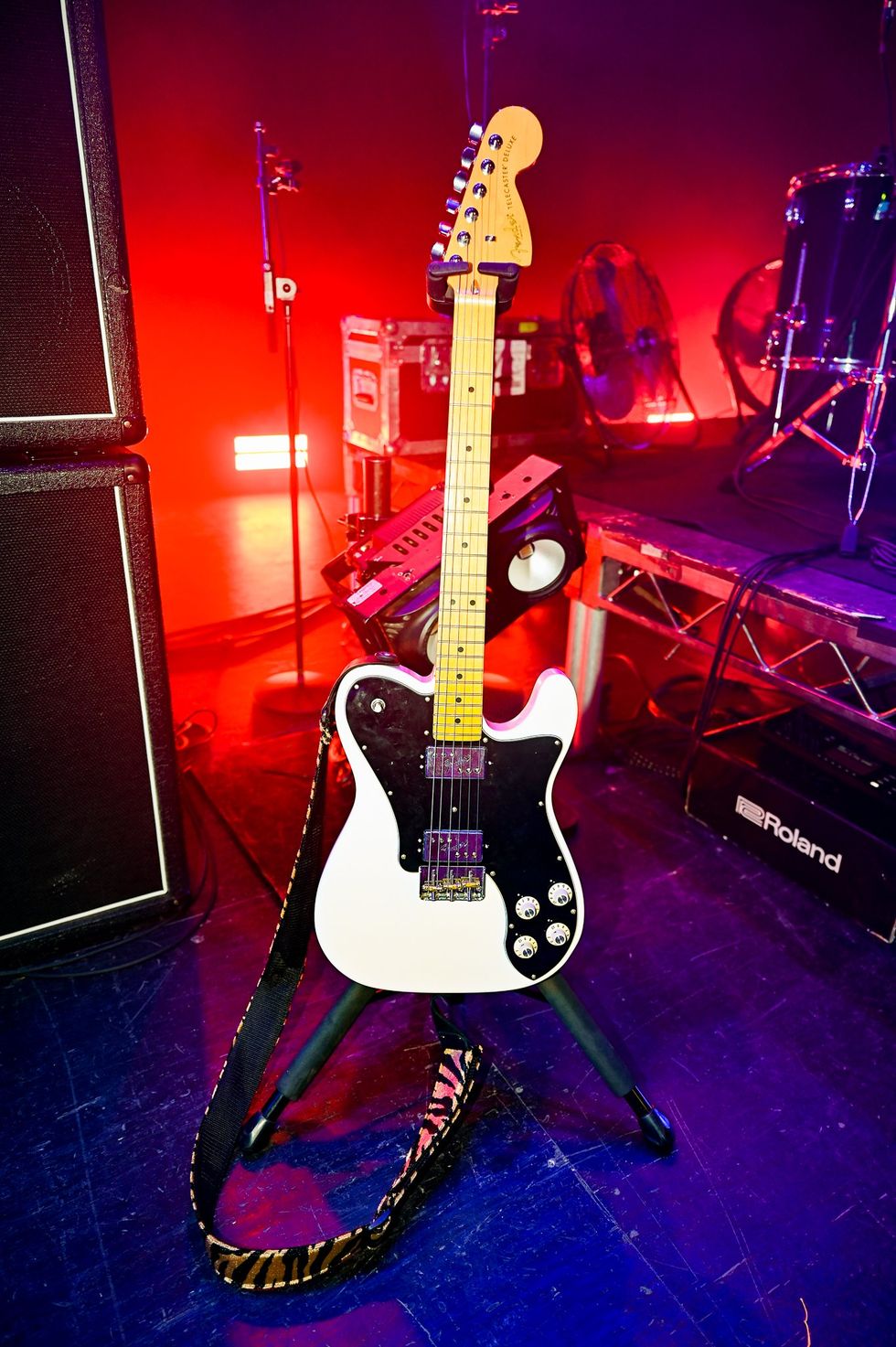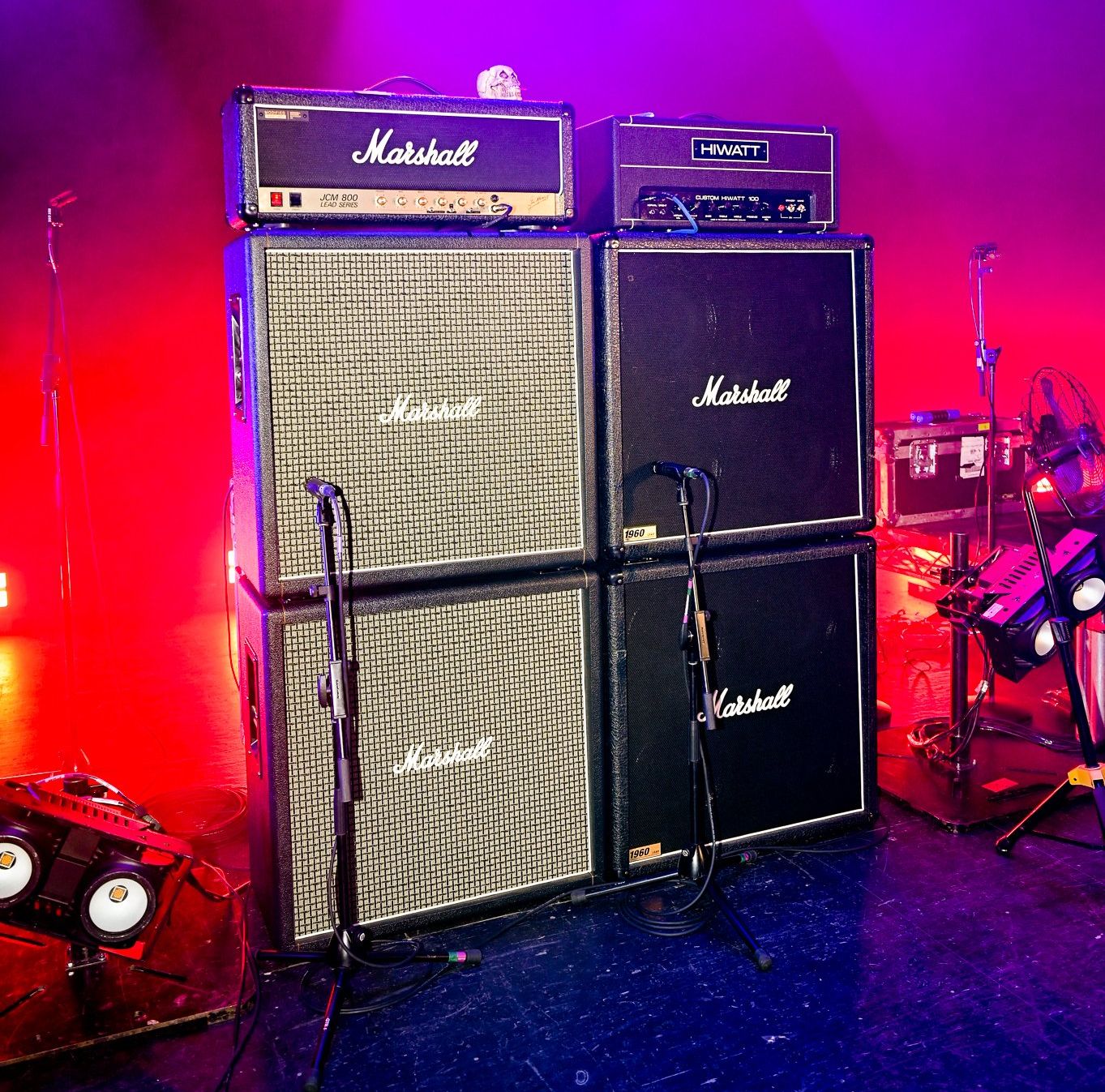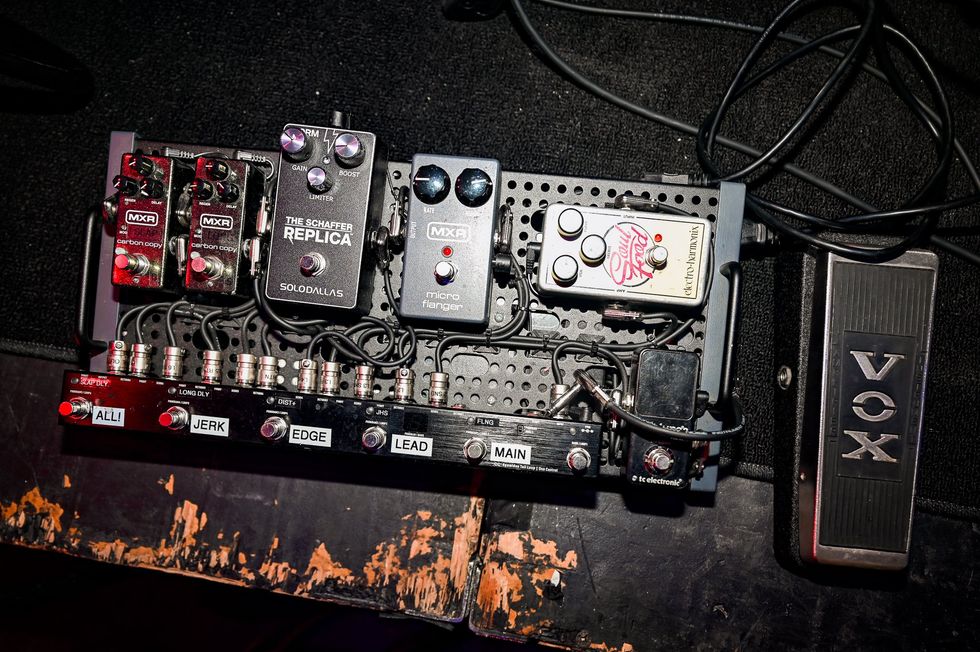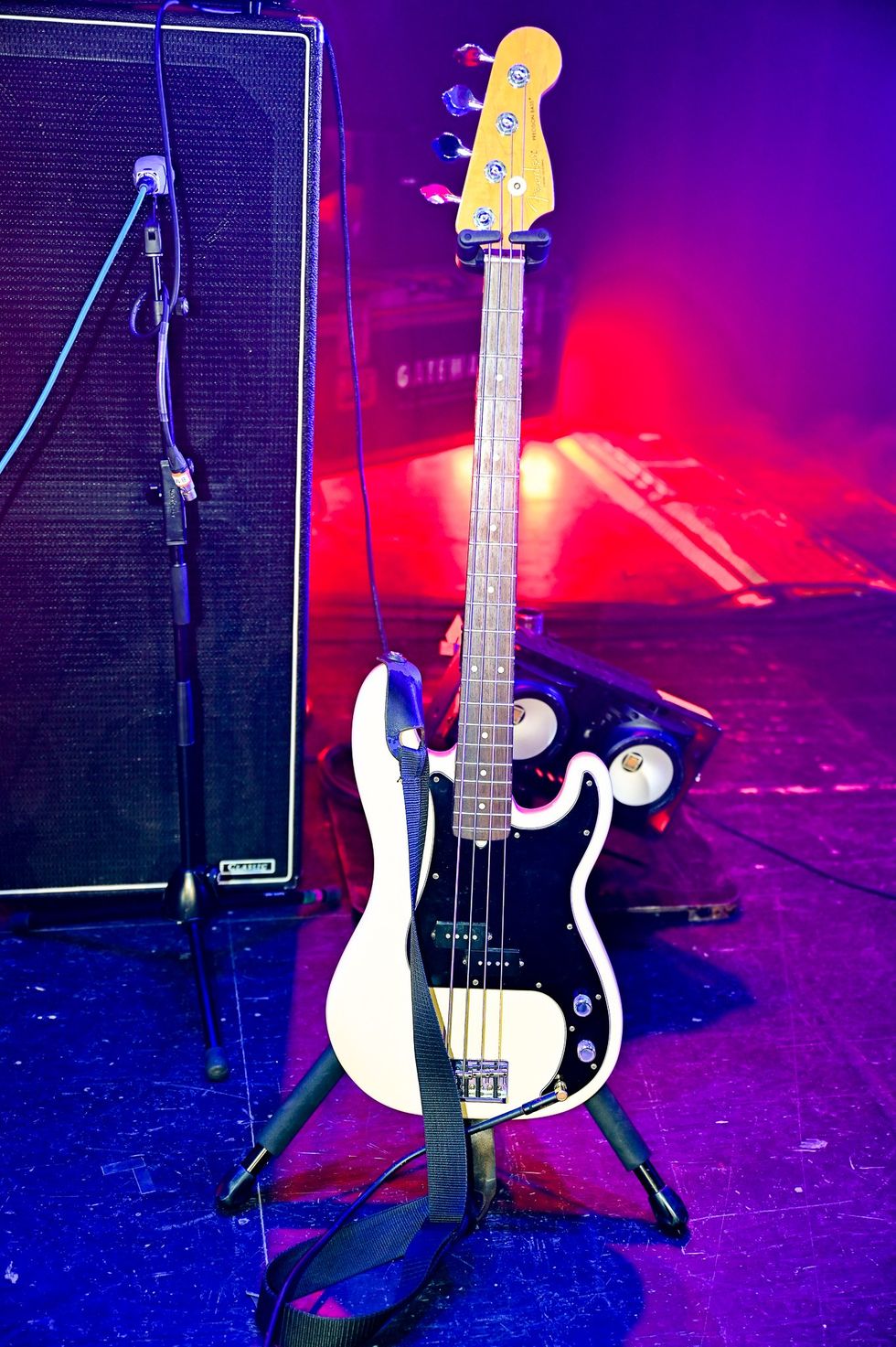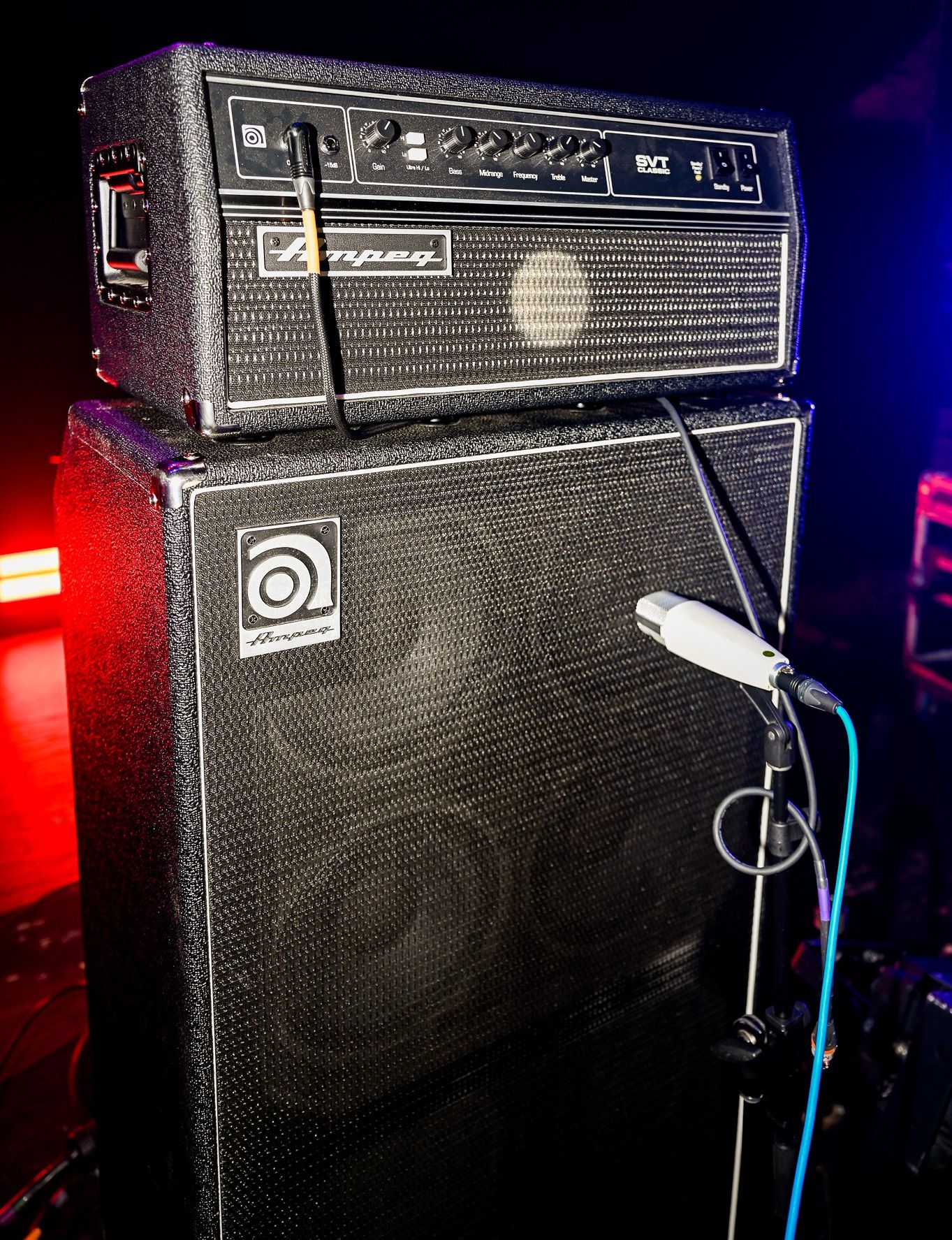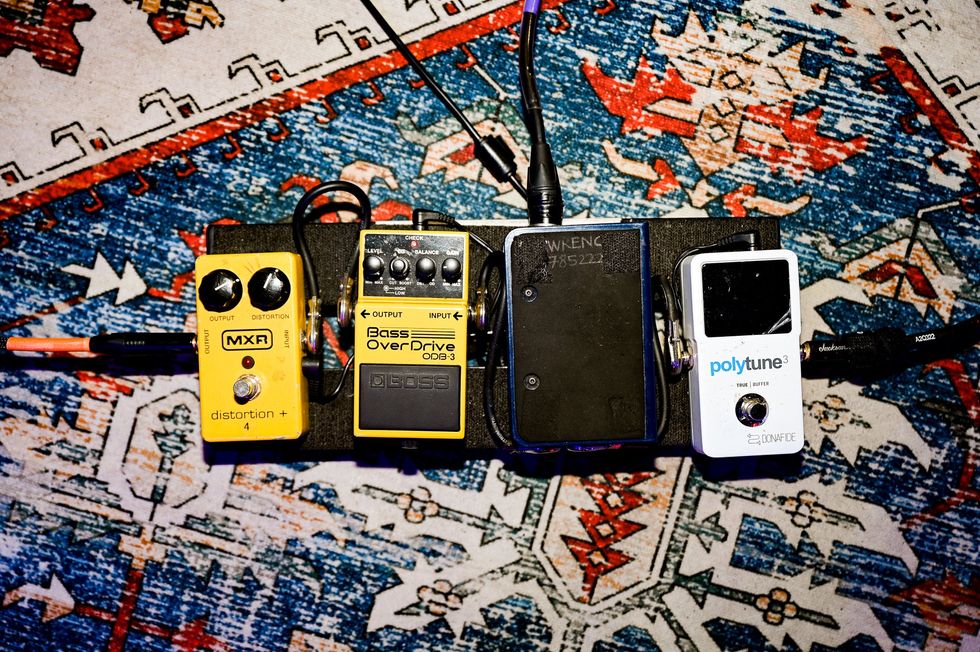Followers of current events might be astonished to learn that the internet isn't quite as effective at separating myth from fiction as its early advocates and creators promised. I was reminded of this state of affairs whilst sniffing out sentiments about vintage Harmony guitars and the complex, convoluted world of gold-foil pickups. Needless to say, there are a lot of strong opinions out there—from advocates that defend old Harmonys as underrated, to snobs who still consider them universally substandard, to the growing cult of gold-foil fanatics who sing their praises to the sky without even agreeing about what a gold-foil pickup is.
Why do I mention this in the context of reviewing a brand-new Harmony instrument? Because the modern Harmony—now a division of BandLab Technologies—is again defying myth and easy categorization in a fashion that's likely to divide opinion just like the old Harmony did.
Recorded with a black panel Fender Tremolux into a Universal Audio OX black panel Fender Deluxe cabinet emulation into a Universal Audio Apollo Twin and Universal Audio Luna.
The three passages are played on the bridge, combined, and neck pickups respectively.
The U.S.-made Comet reviewed here is perfectly emblematic of how tricky reviving a brand and navigating those old myths can be. It's a beautifully built guitar—on par, in quality terms, with many higher-mid-price and high-end electrics. It's a distinctive visual presence in a world of lookalikes. And it sounds freaking great, too, dishing inspiring, mold-breaking, humbucking tones that prompt new musical directions as you play. For some, the Harmony name will probably conjure pawn shop associations that could make the near-$1,500 price tag tough to swallow. For more open-minded players, the Comet could be a tantalizing path away from the same-old-electric rut. My guess is that for those who spend real time with the Comet, the latter scenario is much more likely.
Feathered Flight
The semi-hollow Comet design does not slavishly adhere to any chapter in Harmony history. In fact, to my knowledge, there has never been a Harmony quite like the Comet. Though some have likened it to Harmony's H72, 75, and 77 from the 1960s, the horns are a bit pointier and it's much smaller—evoking Gibson's downsized ES-339 and some of Vox's underrated semi-hollows from the early 2010s. There are many upsides to a semi-hollow guitar of this size. For starters, it's very light, at about six pounds, which significantly minimizes playing fatigue whether standing or sitting. The slim profile also helps make the guitar feel effortless to hold.
If there's a downside to the light weight, it's that there's not much mass to counteract the gravity working on the headstock. Throw the extra ounces from the locking tuners into that equation and you have a guitar that's a bit prone to neck dive, depending on the strap you use. (My usual Ace-style straps exacerbated the problem, but a wider leather strap did much to offset the tendency toward slippage.)
Soaring on Wings of Foil
The Comet's relatively compact dimensions and light weight accentuate the guitar's already impressive playability. Our review guitar showed up with the action almost too low, but once I'd made a couple quick bridge and intonation adjustments, the Comet felt fast and responsive under my fingers. The 12" radius, medium-jumbo frets and 25" scale conspire to lend an almost Gibson-like feel, even though the neck profile has more than a trace of Fender shape and slimness. For many players it will be a perfect blend of ingredients. And apart from the tight cutaway making access to the highest frets difficult, it tends to invite very exploratory playing.
The pickups certainly exhibit many of the most coveted attributes of classic gold-foils
The Comet is a quality instrument by any standard. Evidence of attention to detail is everywhere. The complex compound curves that occur at the point where the arched back and the set neck joint come together are especially pretty. The honey-and-amber-hued nitrocellulose finish is lovely, too, revealing much of the mahogany body's subtle, wavy grain. Some nods to Harmony history feel less at home here—particularly the inverted peanut butter cup tone and volume knobs. They look authentically vintage (apart from the bleached white appearance), but feel a little plasticky and inexpensive compared to the excellent materials used elsewhere. They are, however, brilliantly placed for volume swells and quick tone adjustments. The sturdy pickup switch is smartly situated, too—safely out of the way of aggressive strumming motions, but close at hand for the switches you intend to make.
The most individual aspects of the Comet's performance are manifested via the excellent pickups. Harmony calls these humbuckers gold-foils, a wide and largely misunderstood pickup category than can be a great many things. The company is coy about what lurks beneath the covers. But in purely sonic terms, the pickups certainly exhibit many of the most-coveted attributes of classic gold-foils.
The most striking tones come from the bridge pickup. Here you'll find biting sounds that would make a Telecaster blush. But while the most trebly tones are cutting and loud, there is still a little softness and compression at the peakiest edge of the transients and they retain a bell-like resonance that keeps these toppy tones thrilling and rich without singeing eardrums. They also do a wonderful job of exciting spring reverb and fuzz effects. The super-present and punchy top end and high-mids from these pickups mean they can seem to overpower the low end at times. Personally, I loved the balance between the two ends of the spectrum, and appreciated the fact that I could extract distinct and not-too-muddy bass counterpoint that sustained without sounding boomy in the way some PAF-style humbuckers can. But I'd guess that, ultimately, even dyed-in-the-wool adherents to Gibson- and Fender-style tone recipes could really warm to the unique balance between present high-end and more concise, subdued bottom that you get from these pickups. They are a very intriguing alternative to those very familiar sounds—especially when you add in the out-of-phase mode available via the push/pull volume knob.
The Verdict
I played the Comet alongside several electrics, and was always knocked out by how distinct and unique it can sound. Studio hounds could conceivably find it indispensable for its ability to dish super-sizzling and clear treble tones that still sing. They'll probably also love the mellow, balanced, and slightly compressed semi-hollow neck pickup tones that never seem to overpower with boomy resonances.
Harmony may have some image-building work to do to overcome biases from snoots and trolls that associate the brand with pawn shop bargains. And the $1,499 price may well be a touch on the high side of the high-mid-price spectrum for some. But given that we've seen a lot of good Asia- and Mexico-built instruments creep into this price range and higher, it's certainly not an exorbitant tag for a well-crafted, U.S.-built instrument with so many truly distinctive tones.







